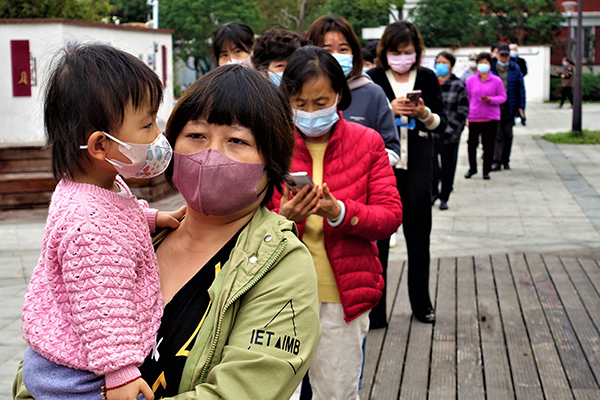Standing tall as a defining physical trait, height encapsulates more than just inches and centimeters. It serves as a reflection of numerous factors intricately woven into the fabric of one’s life: genetics shaping predispositions, environments molding growth, and socioeconomic conditions influencing access to nutrition and healthcare. Delving into the average height of the Chinese populace unveils a tapestry of insights into their collective health, societal dynamics, and overall prosperity. This exploration not only scrutinizes statistical averages but also delves into the underlying contributors that sculpt these differences in stature. From genetics to lifestyle choices, each element paints a nuanced picture of height’s multifaceted significance in the lives of millions.
What is the average height of people in China?
According to the Global Burden of Disease Study, the average height of adult males in China is around 5 feet 7 inches (170.18 cm), while the average height for adult females is approximately 5 feet 3 inches (160.18 cm).
How does the average height of Chinese individuals compare to other countries?
Chinese people tend to have a lower height compared to some Western areas. Countries in Northern Europe, such as the Netherlands, Sweden, and Norway, tend to have some of the tallest average heights globally. For example, the average height for adult males in the Netherlands is around 6 feet (183 cm), while in the United States, it is approximately 5 feet 9 inches (175 cm). However, height can vary significantly within populations, and there are exceptions to this general trend.

Is there a significant height difference between rural and urban areas in China?
Yes, of course. People living in urban areas tend to have slightly taller average heights compared to those in rural areas. This distinction can be attributed to various factors, such as access to nutrition, healthcare facilities, and overall living conditions.
Urban areas in China usually offer better resources and infrastructure, including access to a variety of nutritious food options, improved healthcare services, and higher living standards.
On the other hand, rural areas may face many challenges, such as limited access to healthcare services, lower socioeconomic conditions, and potential nutritional deficiencies. These factors can impact height development and may result in slightly shorter average heights.
What factors contribute to differences in height among the Chinese population?
Genetics
Height potential can be influenced by a variety of genetic differences and factors acquired from parents.
The genetic diversity within the Chinese population is vast due to its large population size and diverse ethnic groups. Various genetic factors contribute to height differences in the Chinese population, although there are no distinct “height genes” specific to them. These factors include genes involved in bone growth, hormone regulation, and skeletal development.
Nutrition
Proper nutrition is essential for healthy development and growth. Shorter stature and stunted growth can result from inadequate intake of important nutrients, especially throughout childhood and adolescence.
In China, dietary habits and nutritional practices can vary across different regions and socioeconomic backgrounds. Historically, there have been periods when access to nutritious food was limited, particularly during times of economic challenges. This could have had an impact on the height of certain generations.
However, China has made significant progress in improving nutrition and food security over the years. Government initiatives and economic growth have helped to increase access to a diverse range of nutritious food options, ensuring a more balanced diet for many individuals.
Socioeconomic conditions
Access to quality healthcare, living standards, and educational opportunities can indirectly impact height. More advanced socioeconomic status often correlates with better access to resources, including proper nutrition and healthcare.
Higher socioeconomic status in China is often associated with better access to resources that support optimal growth and development. Individuals from these backgrounds typically have greater access to nutritious food, which provides essential vitamins, minerals, and protein. Moreover, improved living conditions, including access to clean water, sanitation facilities, and a safe environment, can promote overall well-being and contribute to better height outcomes.
Healthcare
In China, healthcare services plays a crucial role in height development. Prenatal care ensures that expectant mothers receive necessary medical attention and guidance throughout their pregnancy. It involves regular check-ups, nutritional advice, and monitoring of the baby’s growth and development in the womb. Adequate prenatal care can help identify and address any potential issues that may affect fetal growth and contribute to healthier birth weights.
Environmental factors
China, being a rapidly industrializing country, has faced significant challenges related to pollution and environmental degradation.
High levels of air pollution, especially in heavily industrialized regions, can have adverse effects on respiratory health and overall well-being, which can potentially impact growth and development. Prolonged exposure to air pollution and toxins may hinder optimal height attainment, particularly during critical growth periods.

Cultural and lifestyle factors
Cultural factors can indeed play a role in height differences within the Chinese population. Some cultural practices and beliefs surrounding growth and development may influence height outcomes. Here are a few examples:
- Dietary preferences: Chinese cuisine varies across regions, but generally emphasizes a balanced and diverse selection of foods. Traditional Chinese dietary practices often include a high intake of vegetables, rice, and other staple foods. However, individual dietary preferences can vary, and deviations from a well-balanced diet may impact height development.
- Cultural norms and perceptions: In some cases, there may be preferences for shorter stature or beliefs that shorter individuals are more desirable or aesthetically pleasing. These perceptions can indirectly influence height outcomes.
- Physical activities and exercise: Certain traditional Chinese physical activities, such as martial arts, tai chi, and qigong, have deep cultural roots. Engaging in these practices can contribute to overall fitness and potentially impact height development.
Are people in China getting taller over time?
Yes, they are. As the country has undergone rapid development, improvements in living standards, nutrition, healthcare, and overall socioeconomic conditions have likely played a role in height trends.
Historically, China experienced periods of economic and social instability that may have impacted height outcomes. However, with the implementation of various reforms and improvements in the quality of life, including better nutrition and healthcare, it is believed that the average height of the Chinese population has been increasing.
Multiple studies conducted over the past few decades have observed a positive trend in height among different age groups in China [1]. These studies have highlighted improvements in height in both rural and urban areas. It’s worth noting that urban areas tend to show a more rapid increase in average height due to better access to resources and higher living standards.
In conclusion,
Although in the past the average height of the Chinese population may have been lower, there is evidence to suggest that it has been increasing over time. This positive trend can be attributed to improvements in living standards, nutrition, healthcare, and overall socioeconomic conditions. Studies conducted in both rural and urban areas have observed these height improvements, with urban areas often experiencing a more pronounced increase. Individuals in China seeking to promote height growth should focus on maintaining a balanced nutrition plan, engaging in regular physical activity, getting adequate sleep, and maintaining good overall health
FAQs
Do Chinese people tend to be shorter or taller compared to other ethnic groups?
The average height of a population can vary based on genetics, nutrition, and other environmental factors. Chinese people, on average, tend to be shorter than some Western populations but taller than some other Asian populations. However, it’s essential to remember that height can vary widely within any ethnic group.
Are there significant height differences between Northern and Southern Chinese people?
Yes, there may be some height variation between Northern and Southern Chinese populations. Studies have suggested that, on average, Northern Chinese individuals tend to be slightly taller than those from Southern China. However, these differences are relatively small, and there is considerable overlap between the two regions.
Has the average height of Chinese people changed over the years?
Yes, the average height of a population can change over time due to various factors, such as improvements in healthcare, nutrition, and living conditions. As China has experienced significant economic development in recent decades, there might have been changes in average height. To obtain the most up-to-date information, it is best to refer to the latest research or official statistics.
How does the average height of Chinese people compare globally?
China’s average height falls within the global range of height averages. While there may be some variations between countries, it’s essential to recognize that height differences are influenced by a complex interplay of genetics, lifestyle, and socio-economic factors.
- Related post: Does cheese increase height?



